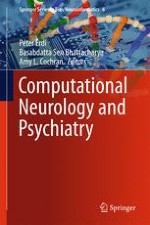2017 | OriginalPaper | Buchkapitel
Outgrowing Neurological Diseases: Microcircuits, Conduction Delay and Childhood Absence Epilepsy
verfasst von : John Milton, Jianhong Wu, Sue Ann Campbell, Jacques Bélair
Erschienen in: Computational Neurology and Psychiatry
Aktivieren Sie unsere intelligente Suche, um passende Fachinhalte oder Patente zu finden.
Wählen Sie Textabschnitte aus um mit Künstlicher Intelligenz passenden Patente zu finden. powered by
Markieren Sie Textabschnitte, um KI-gestützt weitere passende Inhalte zu finden. powered by
